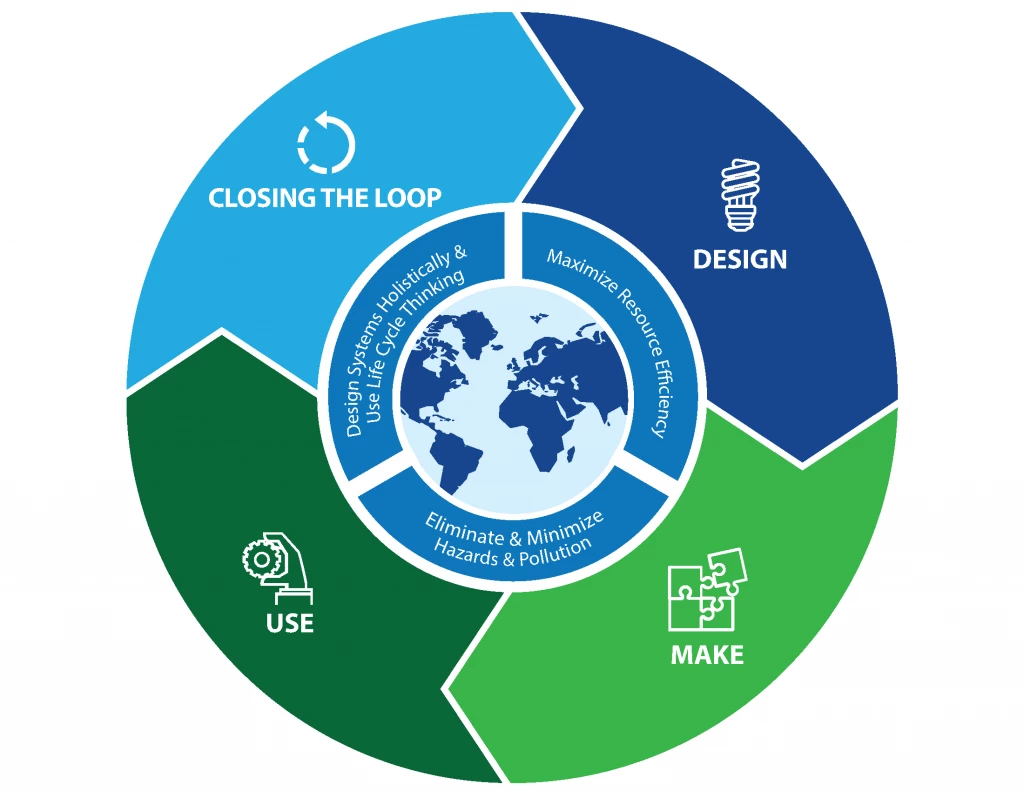A LIFE CYCLE THINKING APPROACH
Life cycle thinking is an important underlying principle in the successful implementation of green chemistry and engineering across chemistry enterprise. This approach allows chemists and engineers to think systematically about how the choices they make at one stage of the chemical life cycle can influence the fate of a chemical and the ultimate impacts chemicals have on society and the environment.
Using life cycle thinking, chemists are encouraged to ask:
- Where do the elements used in this reaction come from? Can the synthetic routes and processes be successfully redesigned in order to eliminate the use of elements facing limits in supply?
- How will the choices scientists and engineers make impact different stages of a chemical’s life cycle?
- How can we use waste or by-products as a resource to produce valuable chemicals?
- How can we make more sustainable chemicals and materials that enable a circular economy?
- How can we design products for recycling, reuse or remanufacture?
- How can we infuse systems thinking and green chemistry and engineering throughout the chemistry curriculum?

In order to highlight the importance of this approach to chemistry and engineering and to facilitate critical discussions on these topics, the theme of each GC&E Conference focuses on one of the stages of the chemical life cycle; put simply: Design, Make, Use, and Closing the Loop (see graphic).
We started using this cyclical approach to Conference themes in 2016 and completed our first cycle in 2019. The 2021 conference will be the second time we have focused on the “Make” stage of the life cycle.
While a wide variety of green chemistry and engineering topics are covered in the technical program each year, the thematic focus on the stages of the chemical life cycle is intended to challenge the green chemistry and engineering communities to move towards a systems thinking approach that will help create a more sustainable future.